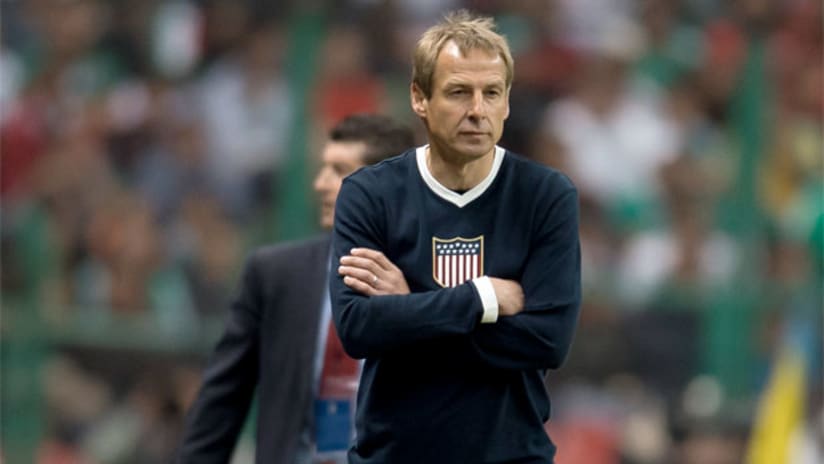MEXICO CITY — Mexico attacked for 90 minutes. The US national team defended. And the end result was a 0-0 draw in Tuesday's World Cup qualifier.
Simple enough, right? Well, there was plenty more tactical nuance to the CONCACAF Clasico. Did you pick up on these?
STAYING TIGHT: Omar Gonzalez talked about how the US "tried to keep the field compact and limit the space from the US forwards to the defense to about 30 yards" all in a bid to force Mexico into the long ball.
TAKING MEXICO OUT OF THEIR GAME: Manager Jurgen Klinsmann said that it was part of the USA's game plan to prevent Mexico from playing out of the back or combine through the midfield. This required plenty of pressuring and chasing by every US player and some smart positioning. For example, on Mexico goal kicks, the US made sure to play a high line, giving El Tri little space to build their attacks.
READ: Have USMNT found the centerback pairing they can count on?
"We hoped they got forced into the long, diagonal balls because we know in the air we have really really good players," Klinsmann said.
DIAGONAL BALLS: The diagonal cross-field ball from Mexican defenders to their wide attackers is one tactic the Americans were already very familiar with, according to Michael Bradley. "For the most part, we did a really good job with that," he said.
WATCH: US players react to draw in Azteca
KEY TO USMNT DEFENDING: Klinsmann said it came down to their "defensive shifting" and "how we closed down spaces." The effort eventually wore out Jozy Altidore, who was substituted just before the hour mark, and it meant Clint Dempsey was spending the majority of his time "running in between their two No. 6s" to disrupt them from building attacks.
LET'S BUILD TRIANGLES: That's what the Americans were doing on Tuesday night. Here are the two Klinsmann talked about. On the right side, there was right back Geoff Cameron, right mid Graham Zusi and right center-mid Michael Bradley. The left triangle was formed by left back DaMarcus Beasley, left mid Herculez Gomez and left center-mid Maurice Edu.
"The only way that you can get a result here is that all of the pieces are connected," Klinsmann commented.
PRAISE FOR THE BEAS: Despite once again playing out of position, Klinsmann called Beasley's performance at left back "outstanding" vs. Mexico. And he highlighted one aspect of Beasley's skill set that may often go overlooked because of his more eye-catching acceleration: His ability to read the game and predict where balls will go.
"You could see in the second half a lot of the balls he won was by actually reading it," Klinsmann said.
FRUSTRATING EL TRI: Bradley also mentioned how he felt the US were able to "find our own rhythm" during stretches of the first half and "put the game on our terms and control parts of the game … When you're able to do that that's not something they like or are comfortable with."
And the longer the US kept it 0-0, the greater the pressure on El Tri, inducing the Mexicans' panic attacks of the final minutes which ultimately played into the USA's hands.













